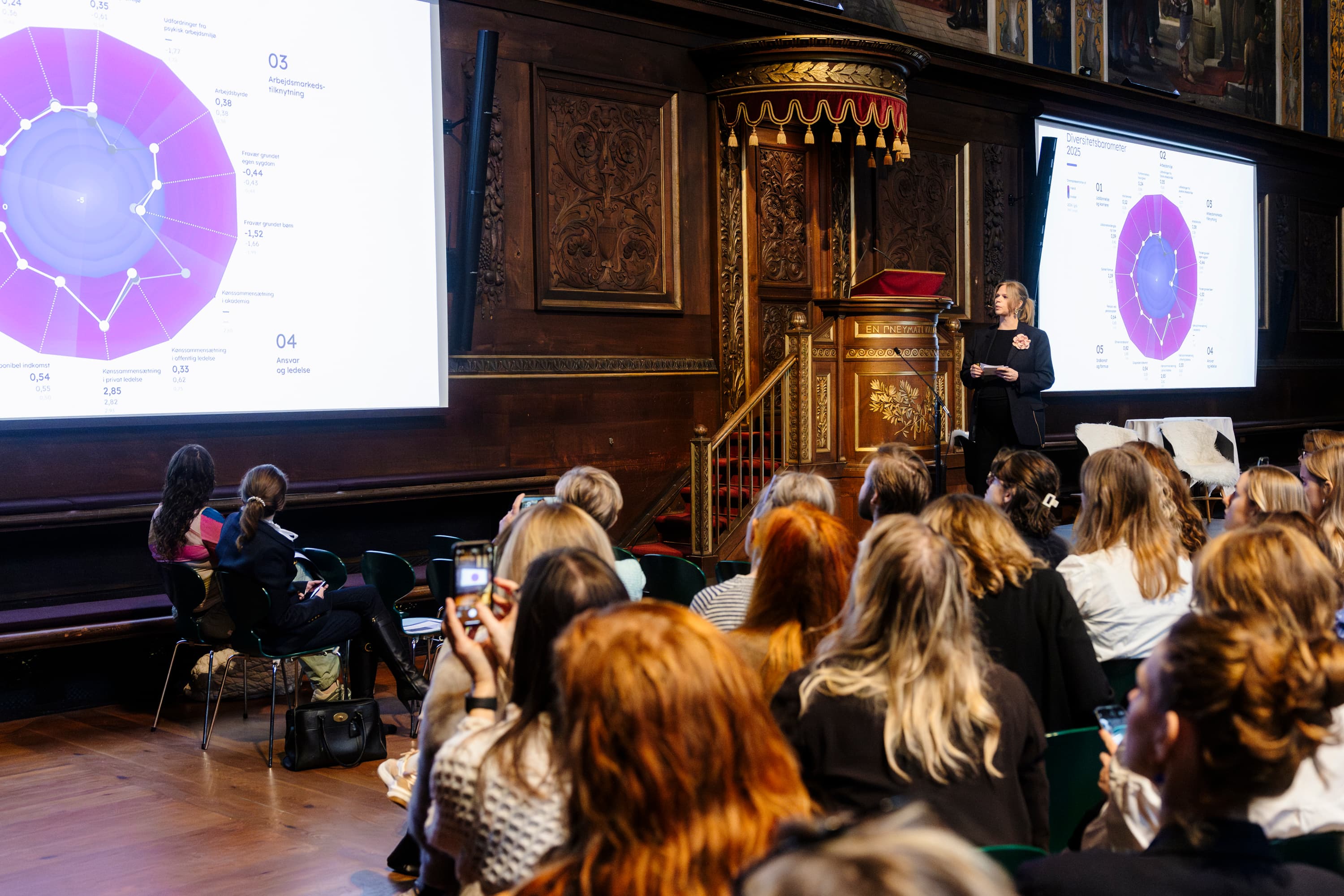Sub-Conclusions
Here are the sub-conclusions from this year’s barometer.
Here are the sub-conclusions from this year’s barometer.
Based on five themes that each address gender equality and diversity in the labor market from different perspectives, the Diversity Barometer provides a comprehensive overview of the current situation.
The barometer focuses on gender representation within the themes: Education and Career, Labor Market Attachment, Work Environment, Responsibility and Management, Income and Wealth.
For each theme, the barometer indicates with an index value how close we are to achieving equal gender representation or whether there is a gender imbalance, with either women or men being overrepresented.
Chair of the EQUALIS advisory board
“We need the barometer to sling all available data right at us, so we don’t get lulled to sleep by how we think reality looks.”
The Diversity Barometer publication is based on three main data sources: 1) Literature and research, 2) register data, and 3) interviews and case studies of initiatives in selected companies.
Through an annual literature review, we examine research in the field of gender equality and diversity related to the labor market. We focus on a selection of research findings published since the last Diversity Barometer that illuminate and explain gender inequalities within the barometer’s five themes.
The register data come from Statistics Denmark, the National Research Center for the Working Environment, and Danish Universities. Measurement points and variables are described in the Diversity Barometer’s methodology appendix.
Based on interviews with key persons from selected companies, a series of case studies have also been developed to provide examples of good practices in the business community’s efforts to promote gender equality and diversity.
The Barometer Index is based on the average values of 22 selected indicators spread across the five themes.
The indicators are converted to a scale from -5 to 5 to ensure that heterogeneous measures of gender inequality are translated onto the same scale.
A score of 0 on the index represents equal representation between men and women. Negative values indicate that women are overrepresented within the theme or subtheme described by the indicator, while positive values indicate that men are overrepresented.
Both men and women can be disadvantaged depending on whether the index score is negative or positive. Therefore, the index score should always be interpreted in the context of the specific theme.
The greater the absolute value of the index score, the larger the inequality between men and women. It is also important to note that when tracking changes over time, the key question is whether the inequality between men and women has increased or decreased. This is determined by whether the index score moves closer to or further away from 0, indicating more equal representation or greater disparity, respectively.



For example:

The Diversity Barometer is a measurement and monitoring tool that maps gender equality and diversity across the entire Danish labor market.
